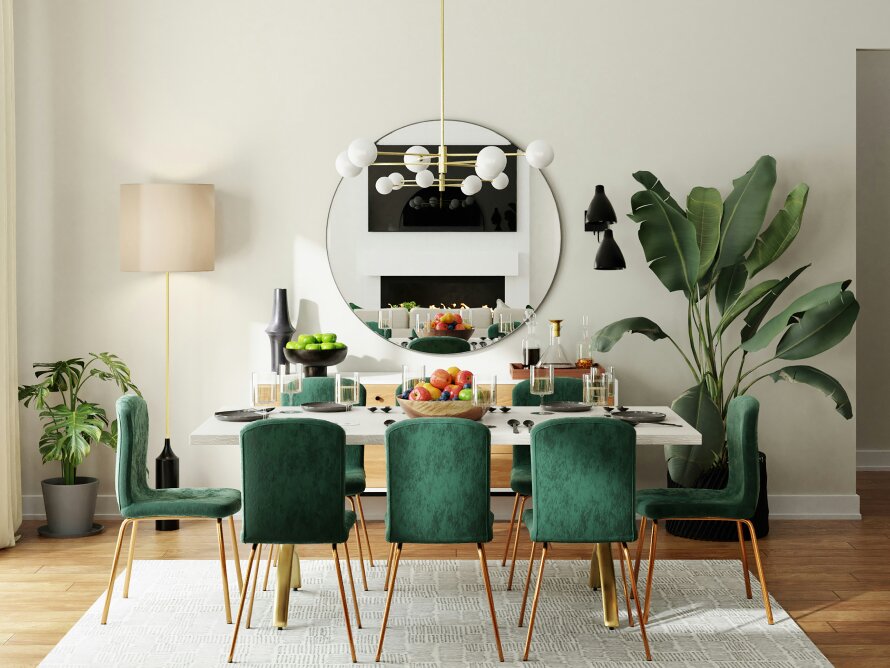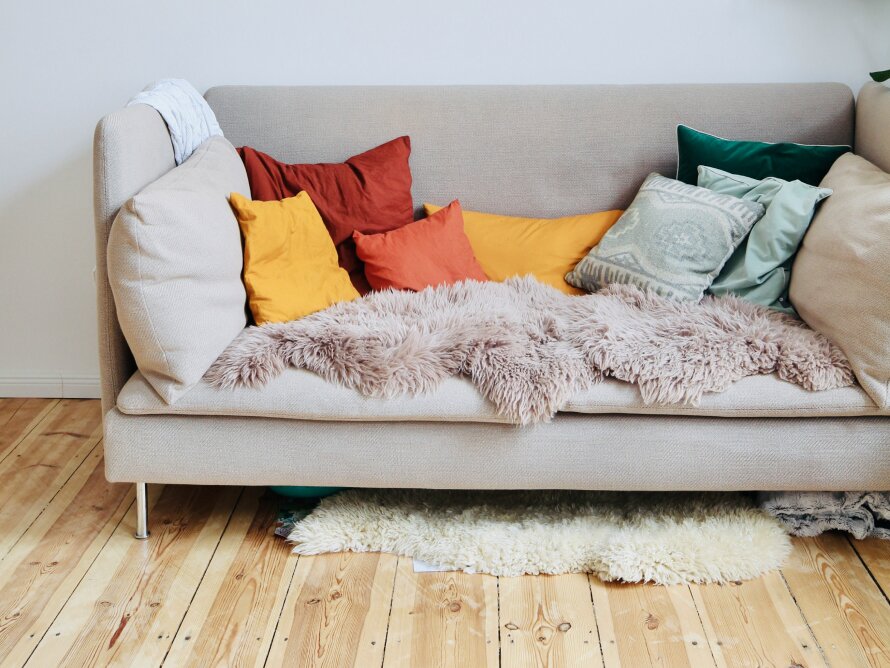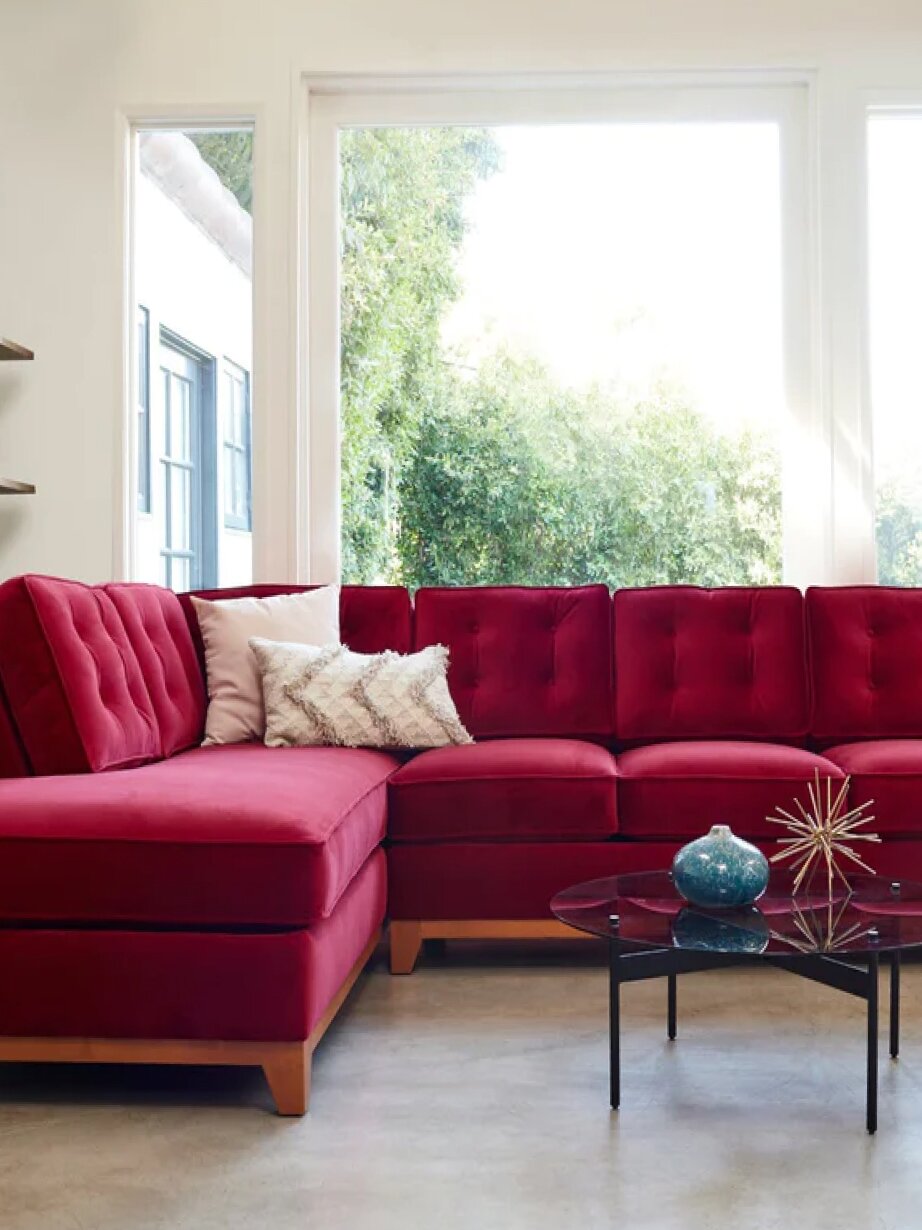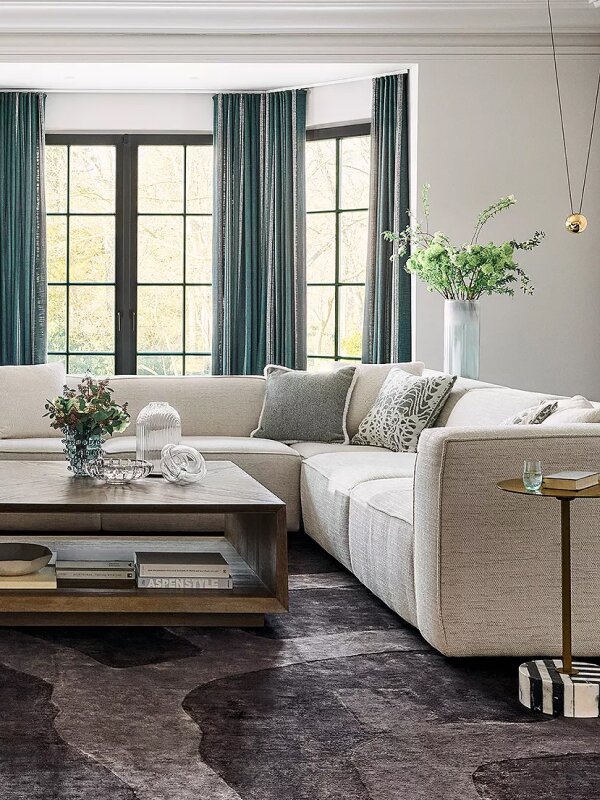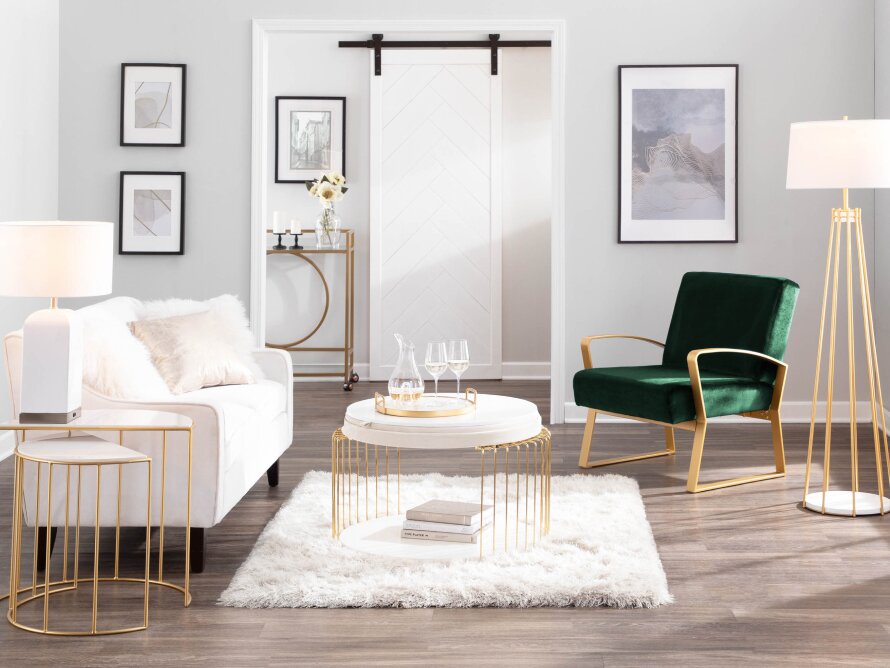Decorating with Textures


There are infinite ways to use texture to make spaces inviting, interesting and unique. Choosing the right ones adds dimension to a room and provides a contrast. It can make furniture pop with personality and complement existing design elements.
What is Texture?
In fabric, textures can take the form of patterns woven, printed, or sewn onto the material or three-dimensional shapes such as tufts, pleats, shag, and buttons. However, textures aren't limited to just fabric. They can come in the form of wall art, embossed wallpaper, and wall treatments. The surfaces of wooden chairs, grainy cobblestone fireplaces, and woven rugs add their own unique stamp to the room's decor.
Texture in Interior Design
The texture of furniture, such as the smooth, metallic finish of a modern dining table, is just as important as the type of upholstery on a couch or depth of shag on a rug. The sleek surfaces characteristic of wooden and steel furniture look great paired with leather upholstery, and can also be used to contrast rug materials with larger pile heights.
Keep in mind that too much of anything can be overwhelming. Overemphasizing texture can make a room loud and dampens relaxation. Texture should be used sparingly. For example, couches with subtle quilted designs are a pleasant way to offset neutral-colored curtains and lampshades.
Even though overdoing textures is generally a no-no, concentrating them in important areas of a room directs attention and creates a focal point. Fluffy trim on couch pillows combined with tufted sofa upholstery is inviting, giving friends and family members a comfortable area to socialize, laugh and watch movies. A dark leather couch next to a rich, wooden bookshelf, combined with a deep maple desk and metallic lamps make for an intimate study area.
Adding Ambiance with Texture
When designing an interior space, use texture to create ambiance. To create a masculine feel, consider smooth woods and rich, dark veneers, along with contemporary tables made from metal and glass. These living quarters often feature silken upholstery with neutral colors and darker hues. In a more feminine space, shaggy pillow trim, furniture embellishments and soft or bright colors will be common. They also can have lots of floral patterns and tufted couch textures.
Popular Textures & Types of Fabric
When deciding on what types of fabric to use, determine the room's focal point. If it's a smooth piece of furniture, such as an entertainment center, try patterned wallpaper or sofas with textured fabric to offset the look. If there's a wicker table or some other textured piece in the center of the room, neutral carpet, rugs and chairs may be the way to go.
Impact of Textures on the Room
Depending on the types of textures used, a range of moods can be achieved. Shag rugs combined with glossy surfaces, metallic furniture and low-key fabrics will give a modern feel to a room. Layered rugs, weathered woods and woven wools will help to achieve a more rustic, traditional style.
The use of matching textures gives a sense of unity and cohesion while contrasting ones make design elements jump out in a subtle yet effective manner. Clustering opposite materials in a close area can create interest and grab attention. A shaggy rug under a sleek metal coffee table provide a nice balance between the two styles.
Final Thoughts
When it comes to texture in interior design, homeowners can use a range of techniques to dictate the room's atmosphere. Adding textures to your space creates contrast and makes a statement.


